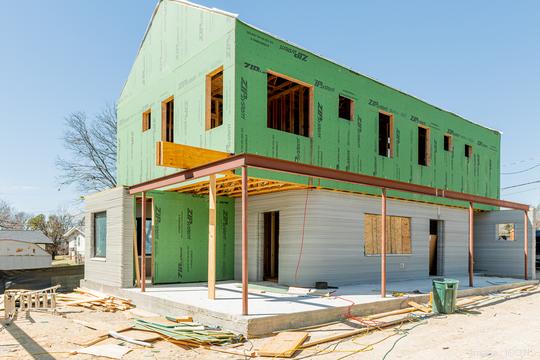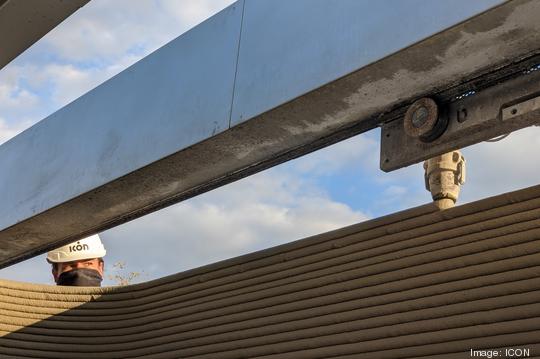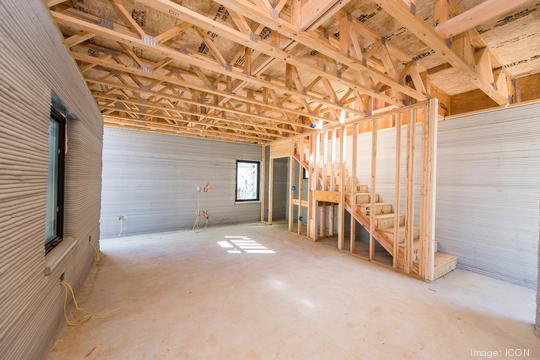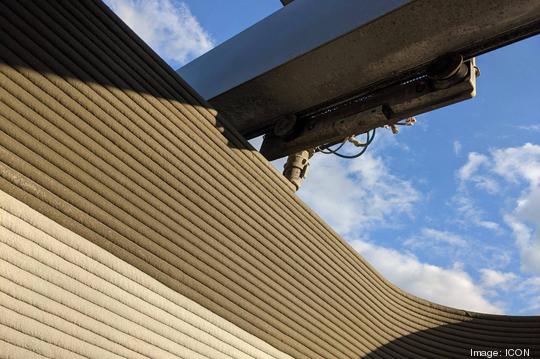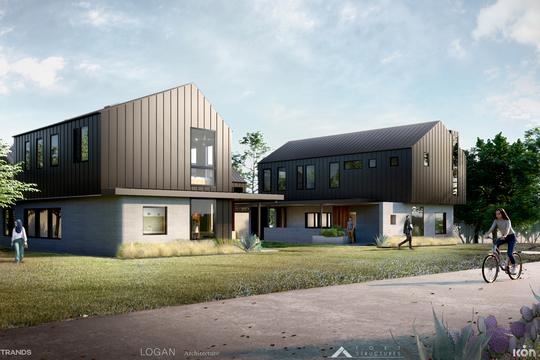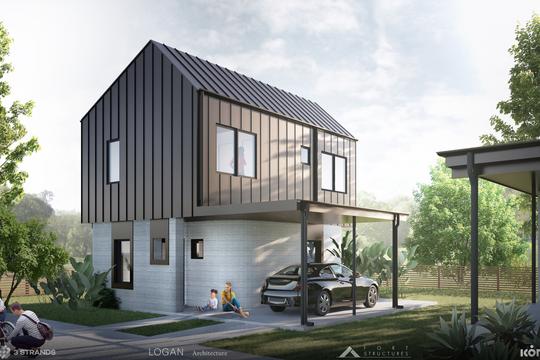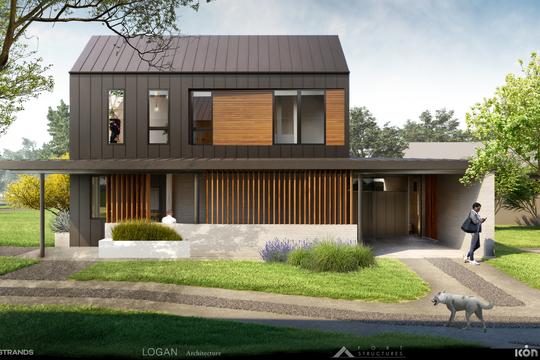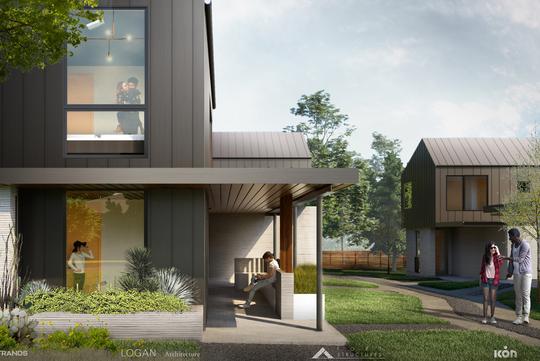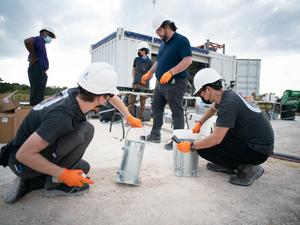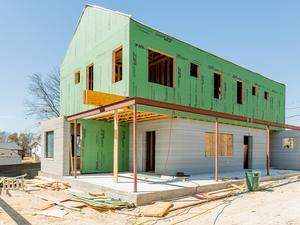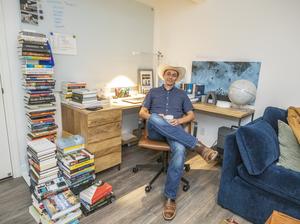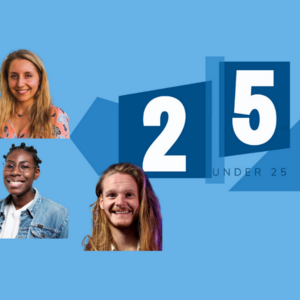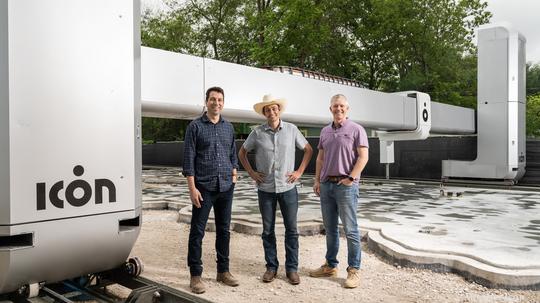
Icon Technology Inc. sells, and delivers, systems to build 3D-printed homes — be they here on Earth or in space.
Investors are clearly excited by that mission, as Icon on Aug. 24 announced it had closed a $207 million series B funding round. It's among the largest capital raises by an Austin company thus far in 2021. In May, Homeward announced a $371 million series B round, with $136 million in equity funding and $235 million in debt, and Workrise announced a $300 million series E round.
The funds will allow Icon to double its headcount over the next year and continue to combat a global housing shortage.
The company today is building homes for use in a variety of environments and sectors. It is developing habitats that future astronauts may use on the moon and Mars. It is building rocket pads. It is building barracks for the Texas Military Department at the Camp Swift Training Center in Bastrop. It is building residences for people in Mexico. And it is building market-rate houses in East Austin.
Slideshow: Click through the gallery below to see the East Austin homes Icon is building with Kansas City-based startup 3Strands
PHOTOS & RENDERINGS: 3D-printed homes in Austin, Texas
CEO and co-founder Jason Ballard also believes Icon has a role to play in addressing homelessness. The company in 2019 announced it would build a series of 3D-printed homes at Community First Village, a community for the formerly homeless in Northeast Austin. Those homes were delivered in 2020, according to the company's website.
“If we’re going to solve homelessness, there has to be a radical transformation in the way we approach our thinking about shelter,” Ballard said. “We’re going to solve it using space technologies. There’s no other way.”
Silicon Valley-based venture capital firm Norwest Venture Partners led the $207 million series B round. Norwest Managing Partner Jeff Crowe joins Icon’s board as part of the deal. Other participating investors included Austin-headquartered 8VC, Bjarke Ingels Group, BOND, Citi Crosstimbers, Ensemble, Fifth Wall, LENx, Moderne Ventures and Oakhouse Partners.
“Icon’s groundbreaking technology has created a new paradigm for homebuilding that fundamentally changes how housing is constructed,” Crowe said in a statement. “The company is already building everything from single family homes for the homeless all the way to structures for habitation on the moon and Mars. But we are particularly excited about the opportunity for Icon to collaborate with home builders and massively impact the housing shortage currently plaguing the U.S.”
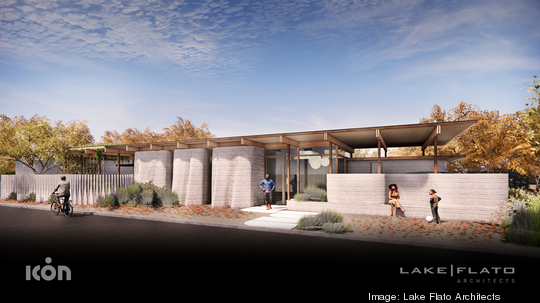
Icon has raised $266 million since Ballard, Alex Le Roux and Evan Loomis co-founded the company in 2017. That includes a $35 million series A round closed in August 2020. In addition to its printers, the business also has become known for its related software and building materials.
Putting $207M to work
The fresh $207 million will allow Ballard and colleagues to put their “heads down and execute,” the CEO said. The Icon team hadn’t planned to raise more capital until next year, but because of the milestones the company hit, the company was approached to take on additional money to further its goals at a more rapid clip. Ballard described the capital as “no-excuses” money.
Part of the plan is to build a new robotic 3D printer every week through the end of the year, Ballard said. And that’s just to meet existing demand. None of the fresh capital will go to “trying to drive demand. It’s depressing how much we have to say no to,” Ballard said. The company’s existing four printers already “are all booked up for a few years.”
The company boasts half a dozen customers, including NASA, for whom Icon is working on multimillion-dollar projects. Beyond those, however, Ballard and his teammates have received requests during the past 60 days from builders and developers to build thousands upon thousands of homes, he said.
Its current Vulcan 3D printer is able to build homes and structures up to 3,000 square feet, and is one-and-a-half times larger and twice as fast as earlier Vulcan versions.
Ballard pointed to the trend that new technology frequently is exclusively the purview of the wealthy at first, but as it evolves, eventually it becomes available for the masses. Automobiles, air conditioning and the internet are but a few examples, Ballard said. Housing is no different.
“What I’m saying is not crazy,” said Ballard, whom Austin Business Journal profiled in November. “It’s the normative flow of technology … housing used to be a depressing thing to talk about. Now, it’s exciting again.”
Ballard estimated the world’s global housing shortage at 1 billion homes.
“Even if we build 1 million homes a year, that will take 1,000 years, which, in my opinion, is about 950 years too long,” he said. The new funding allows the company to scale its capacity to match the urgency Ballard feels: “We’re trying to do things in parallel to compress the technology-advancement cycle.”
Among those advancements: an increase in print volume; multi-story printing; the ability to print smooth walls, roofs and foundations; offering coatings, tinting and coloration; and fully automating the 3D-printing process.
Ballard’s vision is to be in a position where Icon’s printers no longer would need human operators “in the next 12 months." In other words, one could “upload a housing file, and press print with no human interaction necessary.”
The CEO emphasized the company’s purposefully aggressive approach to achieving its goals: “No one can deliver a better, cheaper, longer-lasting house faster than we can," Ballard said.
That requires doubling its current staff of more than 100 during the next 12 months, then doubling the total again in the months following, Ballard said.
“We’re treating this like the Apollo program” — referencing NASA’s program in the 1960s that ultimately landed astronauts on the moon — “for the future of the way we build and the future of the way we meet one of our most basic needs," he said, in reference to housing.
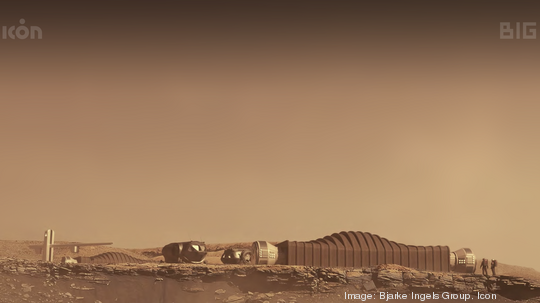
Ballard is looking to hire “for every team, anything you can think of,” he said. Those include scientists and engineers. Ballard expects the $207 million series B to empower Icon to recruit from some of world’s best companies, such as Apple, Google, SpaceX and Tesla.
Icon occupies 100,000 square feet across three buildings in and around The Yard on St. Elmo Road in South Austin.
While Icon keeps private its revenue figures and valuation, Ballard said that “both are big.” And, while the company isn’t profitable because it uses all its capital to stand up its increasing manufacturing capability and invest in research and development, Ballard said he and his colleagues work hard to make sure Icon operates in a profitable way on a project-by-project basis.
Other companies that also provide 3D-printed homes and buildings include Apis Cor, which is based in Boston; France-headquartered XtreeE and China-based Winsun.
Ballard is confident Icon stacks up well against those competitors: he noted that Icon has won 100% of the contracts for which it has bid.
Still, “we don’t take anything for granted,” he said. Icon’s $207 million raise likely means competitors will have an easier time closing $100 million funding rounds due to the sector’s ongoing expansion. The series B round has “put the bullseye” on Icon, Ballard said.
Regarding an exit strategy, Ballard remains open. If a like-minded company that can solve the housing problem expresses interest in acquiring Icon, Ballard and his team would consider it.
“We’ll always take the path that will enable us to succeed in our mission,” he said.
If going public is the most efficient way to obtain capital and move more quickly, Ballard and his team would also explore that option.
